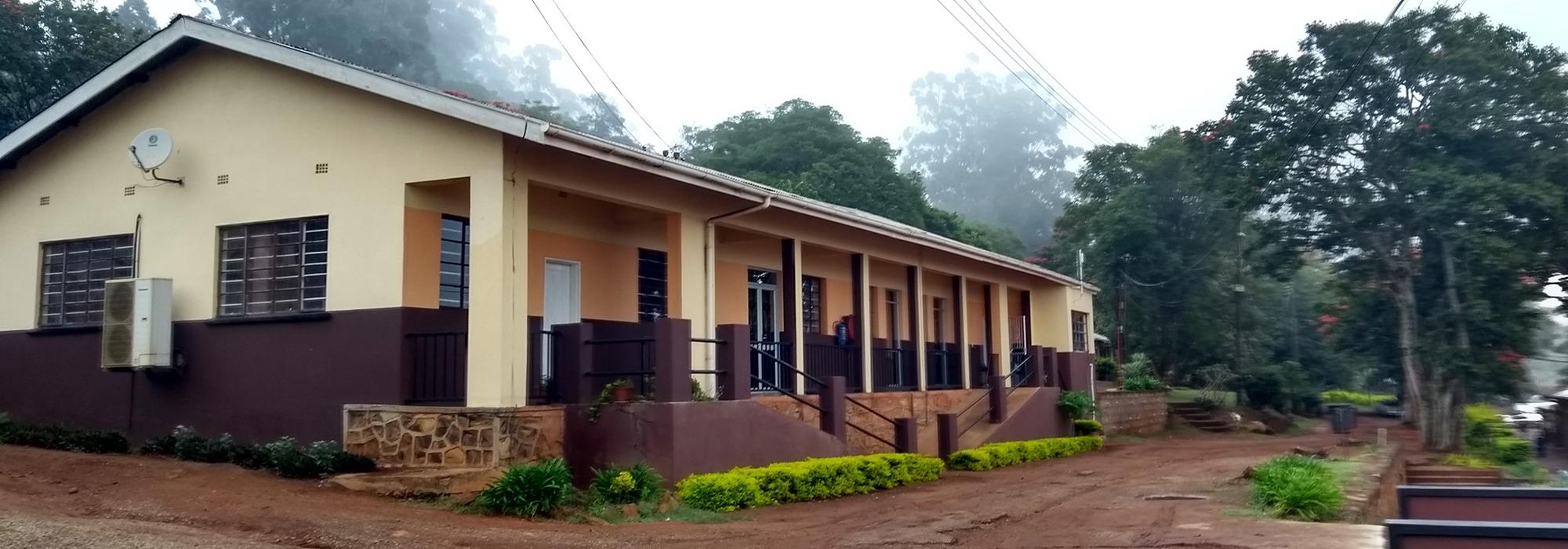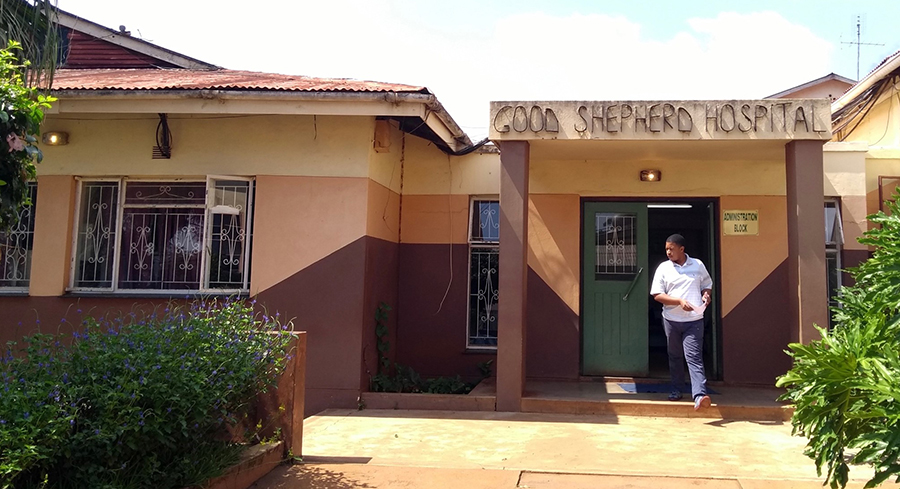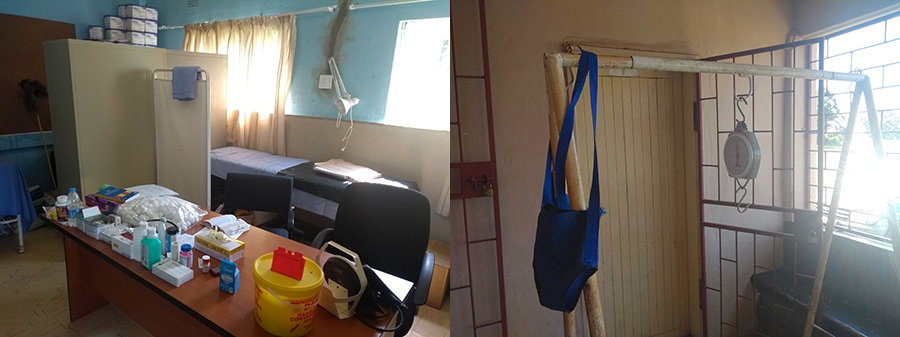
Elective study in a small rural Swaziland hospital
For the last part of my clinical medicine degree, I carried out a period of elective study in Swaziland, where I worked for five weeks at Good Shepherd Hospital, a small, rural hospital, near the town of Siteki.
For my time in Swaziland, my learning objectives were:
- to experience working in a low resource rural setting;
- to encounter and learn about diseases not commonly seen in the UK;
- to encounter diseases seen at a much more advanced stage than in the UK;
- to experience the practice of medicine with fewer available diagnostic tests and treatment options; and
- to become more informed about whether working in such a setting is something I might want to do in the future.
Swaziland is a small, landlocked country in southern Africa, situated between South Africa and Mozambique. It is about the size of Wales, and has a population of about 1.5 million people. Although Swaziland is now classed as a lower-middle income country by the World Bank, according to Oxfam (2017) it is the world’s most unequal country, with two thirds of the population living below the poverty line. Swaziland has the highest prevalence of HIV of any country (roughly 27% of the adult population), and also has one of the highest levels of TB. Largely due to this, Swaziland currently has the world’s lowest life expectancy, currently standing at 49.16 years for males, and 48.54 years for females (UN, 2015).
Good Shepherd Hospital is a 200-bed hospital situated in the rural Lubombo region of Swaziland, and near the small town of Siteki. It is run by the Catholic Diocese in partnership with the government, and despite only having a handful of doctors, it is the main hospital for the region, and has a catchment of over 200,000 people. Whilst healthcare is subsidised by the government, consultations, investigations, and medications are all still charged for, and for most of the patients, financial constraints mean that visits to hospital are kept to a minimum. Despite government subsidies, the charge to see a doctor in outpatients is equivalent to the national average daily wage, but the Lubombo region the hospital is situated in is one of the poorest areas of the country, with 76% of the population in poverty, and 37% of the population in extreme (food) poverty (2009/2010 Swaziland Household income and expenditure survey). In the Lubombo region, as with much of the country, HIV and TB form a large proportion of the burden of disease in the region, with incidences of other diseases are on the rise, such as diabetes, hypertension, and cervical cancer.
Whilst I was at Good Shepherd Hospital, I spent three weeks shadowing the paediatrician, and two weeks shadowing the adult physician. During my time in the paediatrics department I assisted during ward rounds, assessments at the neonatal/maternity department, and in the outpatients’ department. Malnutrition and its complications formed a large proportion of the paediatrics cases we saw, with respiratory tract infections also being very common. The range of presentations was however very wide, and a selection of other conditions I came across included Edwards syndrome, gastroschisis, septic arthritis, Erb’s palsy, a carotid body tumour, and inhaled foreign bodies. Throughout my time on paediatrics it was also very interesting to see how the department made the most of the very limited resources at its disposal. I spent part of an afternoon with the doctor working out the best way of reconstituting meropenem (the first time the hospital had bought the drug) in order to give each batch of solution the longest shelf life, whilst elsewhere I saw how elastic bands were used in place of tourniquets, latex gloves were used instead of nasogastric tube bags, and how crushed tablets were often placed down NG tubes where IV medications were unavailable.

During my time on general medicine I accompanied the hospital’s physician on the ward round during the mornings and spent afternoons in the outpatients’ department. For the inpatients on the ward, a very large proportion had pathologies related to AIDS or failure of HIV treatment, and I was able to see conditions such as active pulmonary TB and Kaposi’s sarcoma. Snake bites were also responsible for a reasonably large proportion of the cases we saw, particularly as in the autumn season snakes tend to move into warmer areas close to human contact, such as homes and beds, in order to escape the cooler conditions outside. Finally, I also saw a surprising amount of cardiovascular disease on the wards, including cases of very advanced heart failure, and cases of diabetes and stroke, even in younger individuals, reflecting some of the more recent changes in disease burden in the population. I found that circumstances on the general medical ward in particular often highlighted the poor resources of the hospital. No endoscopic investigations were available, whilst tests such as thyroid function and differential white cell count were not available anywhere in the country. For conditions such as stroke, thrombolysis was not available, whilst for secondary prophylaxis, 150mg of aspirin per day was prescribed (instead of 75mg of clopidogrel), as only 300mg tablets broken in half were available. The environment of the ward was very different compared to the UK, with relatives being mainly responsible for the care of the patients, and chamber pots being present under the beds, which had no curtains around them.
The outpatients’ department of the hospital was run by one or two doctors out of a single consultation room, and functioned as a crossover between a GP surgery and a specialist clinic. Presentations varied very widely, and as well as the full spectrum of adult medical conditions, paediatric cases were often seen (as adult medicine covered patients aged 12 and over), and occasionally the doctor would also be required to go the hospital car park to see psychiatric patients brought in by the police for the approval of their sectioning. Not uncommonly the doctor would also be called out of the clinic room to treat severely unwell and often unresponsive patients in the tiny three-bed emergency room. Cases I particularly remember were a patient vomiting blood (who survived despite the only treatment available being vitamin K, which happened to be out of stock), and an unresponsive and severely dehydrated patient with a diarrhoeal illness due to failure of antiretroviral therapy for HIV, the progress of whom I was able to follow on the ward rounds of the subsequent week.
Outside of the hospital, I was able to attend a day with the ‘home-based care team’ – a team which would drive out to patients with chronic or palliative conditions who were unable to come to the hospital. It was very interesting and eye-opening to be able to visit the homesteads where the people lived, and to see how they managed to live their lives with their medical conditions.
Another activity I was able to participate in outside of the hospital was assisting clinical decision-making at the rural nurse-led Ebenezer Clinic. The clinic was founded by Wesleyan missionaries near the beginning of the 20th century, but is now run by Precious, a wonderful lady who donated all of her retirement funds in order to repair the clinic to prevent its closure by the government. During our time at the clinic we saw a diverse mix of cases, including myasis (maggot-containing insect bites), skin infections (often affecting whole families, who would often come in to the room all at once!), heart arrhythmias, pelvic inflammatory disease, suspected TB, and acutely unwell infants. Working at the clinic was probably the most valuable experience of my entire elective, not only due to the interesting cases we saw and the positive contributions we sometimes made, but also in large part due to the useful experience we had of being placed in a role where we were often expected to advise on clinical decisions.

My time in Swaziland was a very enjoyable, formative and valuable time, and I would like to thank Dr Jonathan Pons for organising my placement, and all the doctors and other staff at Good Shepherd Hospital for their welcome, support and teaching. I would also like to thank Jonathan and Helen Pons and the community at Mabuda Farm for their wonderful hospitality, and finally Merton College, Oxford, and the Enid Linder Foundation for the funding they provided that enabled me to carry out this elective placement.